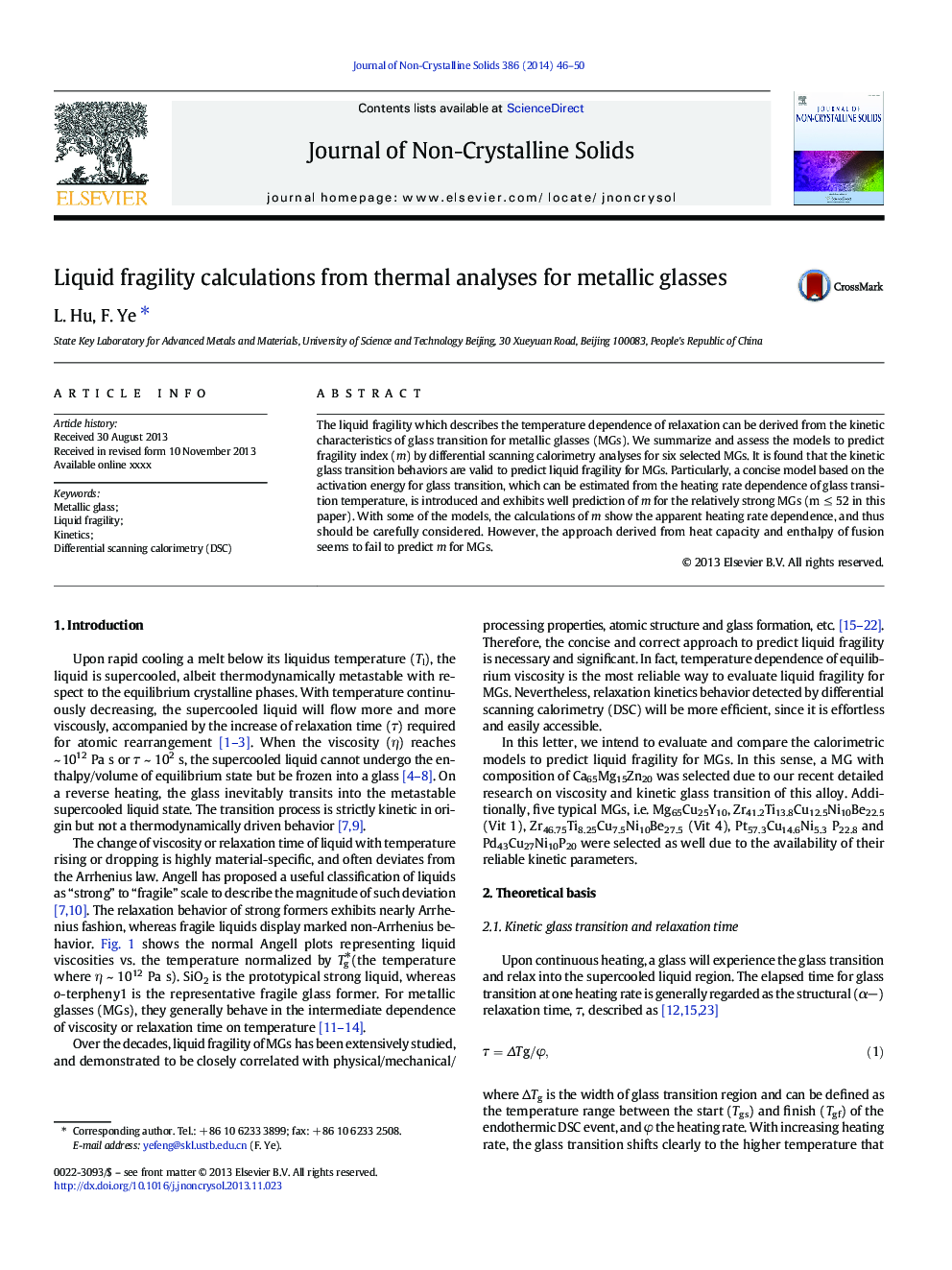| Article ID | Journal | Published Year | Pages | File Type |
|---|---|---|---|---|
| 7902435 | Journal of Non-Crystalline Solids | 2014 | 5 Pages |
Abstract
The liquid fragility which describes the temperature dependence of relaxation can be derived from the kinetic characteristics of glass transition for metallic glasses (MGs). We summarize and assess the models to predict fragility index (m) by differential scanning calorimetry analyses for six selected MGs. It is found that the kinetic glass transition behaviors are valid to predict liquid fragility for MGs. Particularly, a concise model based on the activation energy for glass transition, which can be estimated from the heating rate dependence of glass transition temperature, is introduced and exhibits well prediction of m for the relatively strong MGs (m â¤Â 52 in this paper). With some of the models, the calculations of m show the apparent heating rate dependence, and thus should be carefully considered. However, the approach derived from heat capacity and enthalpy of fusion seems to fail to predict m for MGs.
Related Topics
Physical Sciences and Engineering
Materials Science
Ceramics and Composites
Authors
L. Hu, F. Ye,
